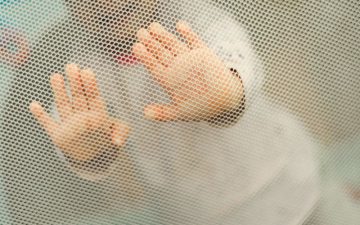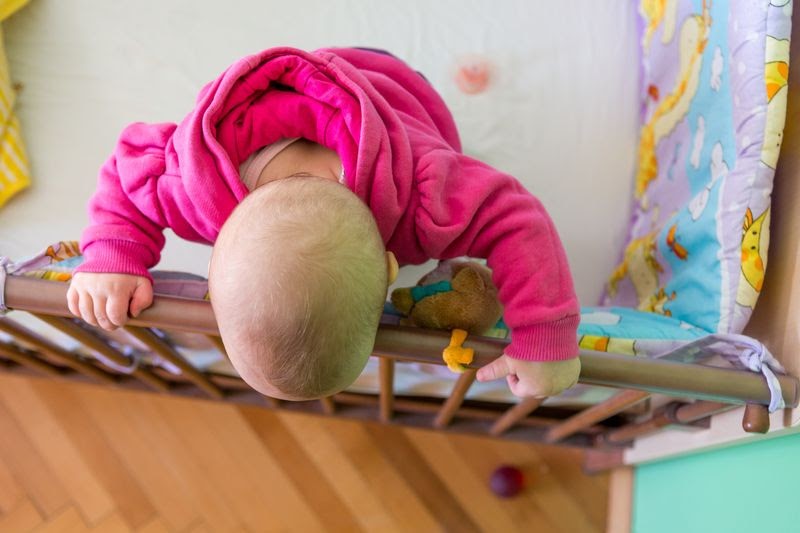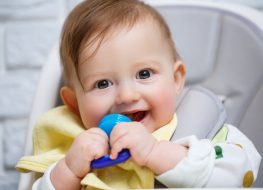
When bedtime rolls around, bedside rails are a great way to keep your little one safe. There are many factors that go into choosing the best bed rail for a baby—which type is best? What should I look for when buying one? And so much more. We’ve compiled this guide to answer these questions!
Types of Side Rails for a Bed for Your Baby
Bed rails vary in form and feature, and each product attribute is designed to address a specific problem. Buying the first listing you see will seal you and your baby’s dissatisfaction. That’s why it’s smart to find out what type is suitable for you and your child’s needs before jumping the gun.
Fixed baby bed side rails
Fixed rails are part of the design of a baby’s bed frame. A crib is a good example of a bed with a fixed rail. But there are other products that vary in surface area and rail height.
Beds with prebuilt rails are formidable guards for your baby. The materials used are also sturdy such as wood or metal. As such, fixed rails are almost impossible to break down.
Detachable bedside rails
The detachable rails come in second among the sturdiest bed rail types. The railings are also made of metal or plastic, but these are installed on the side of the bed and can be detached.
Most parents commonly purchase detachable bed rails, especially for home use. These can be attached to other bed frames in case you need to transfer your baby to another room.
Convertible bedside rails
The convertible safety rails address a pain point that fixed or detachable railings don’t—it’s the ability to be folded down. This makes it easier for parents to sit at the bedside and hold their babies. They don’t have to pull their child out of bed and bring them to the chair across the room to tend to them.
Convertibles protect while also allowing plenty of conveniences, especially regarding parents’ access to the baby. Most babies won’t sleep without their parents lying down beside them. Convertibles make it easy to free up space by removing the barrier so you can lie down beside your kid until they fall asleep.
Foam bumpers
Pillows are often used as a barrier to restrict the baby’s movement. But the way pillows are designed means they’re meant for the head or neck and not the side of the bed. Putting them on the baby’s side will not only restrict movement, but they will also take up space.
That’s where foam bumpers can be helpful. These things are basically pillows designed to be thin and are stuffed with a hard foam instead of cotton or feathers.
Foam bumpers are also convenient in their own right because they’re lightweight and can be easily removed from the bedside where they’re placed. They also bring extra comfort and safety; you won’t have to worry about your baby bumping its head on the railing’s frame.
Inflated pillow bumpers
If you and your baby are travelling a lot, the inflatable bumper is something you must get. This portable bed rail is enough to stuff inside the baby bag so you don’t have to worry about hand-carrying a bulky pillow.
Inflated pillow bumpers offer the same guarding capacity as their foam counterpart but with more frequent maintenance. You’ll always have to check the pillow for any puncture holes and patch them up for the pillow to be usable.

Factors That Make the Best Bed Rails for Your Baby
Choosing the type of bed safety rails for your baby is the first step. To maximize the benefits of owning one, you have to consider several factors that will put the functionality of your chosen bedside rail to the test. Your baby’s safety is what’s at stake.
Compatibility to bed
Detachable and convertible bed railings come with different features. As a consequence, this also affects their compatibility to the kind of bed you or your baby are using. Not all are suitable for every type of bed. Unless you’ve decided to get a fixed railing, you must take measurements of your bedside length as well as the bedside frame so you can find a railing that’s compatible with it.
Gaps
Check how far the space is between the surface of the mattress and the bottom of the rail guard. Ideally, you want to get a railing that closes the gap. At the very least, the gap should be small enough to prevent your child’s arm or head from slipping through.
Hinges
Loose rails can cause plenty of worry for parents. You won’t know when the railing will fall loose due to your baby leaning on it. This false sense of security makes injuries a lot less bearable both for the baby and for you.
So it’s of utmost importance that the hinges of the railings fit well when installed on the bedside frame. In addition, the frame must not wiggle back and forth when your baby tries to grab and shake it. Lastly, you’ll want to find an auto-locking feature on the hinge design to ensure it won’t come off if your child leans on it heavily.
Soft but durable material
You want your baby to feel comfy and safe from harm. Choose a railing with a soft rail cover as the material will do just that. One of the best materials manufacturers install in their side railings is mesh. This material is soft, and it also provides good ventilation and lets the air pass through. Your baby won’t get up mid-sleep with sweat on their back, crying.
Dimensions
The height is another factor you need to carefully consider. For detachable and fold-downs, consider how tall your baby is, how strongly they can leap over the rails, or how scared they are of heights. Bed rails must be high enough so that your child cannot roll out of bed but also low enough so that they can’t climb over them and get out of bed on their own.
Heavy-duty
Make sure that the bed rail you choose can withstand your child’s weight, especially when it comes to sudden falls during their playtime. This applies to rails that can be detached or folded down. The weight capacity of the rail’s frame must balance sturdiness and lightness for you to have the mobility you need to take them off or fold them down easily.
The Best Choice for Bedside Rails
The topmost criteria for choosing your bedside rail is your baby. As a parent, you have to observe and take note of how your child behaves while awake and asleep. Before you introduce something new, consider how they will respond based on your observation, and use that to make your decision. The right bed rail product is the one that keeps your little one safe, comfortable, and happy.



